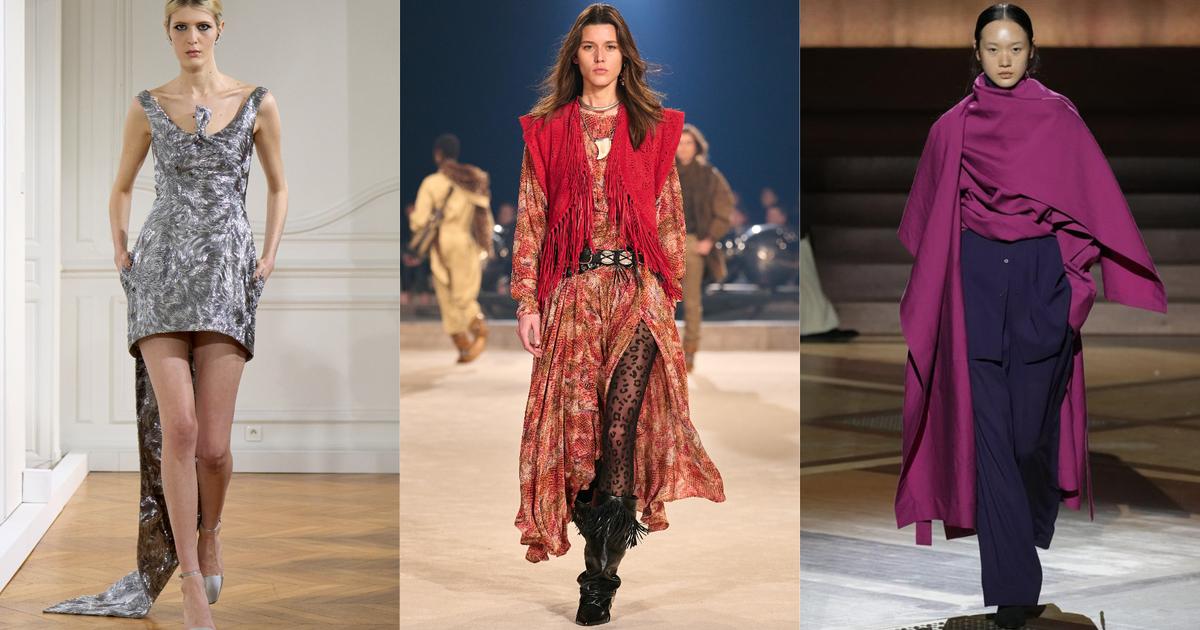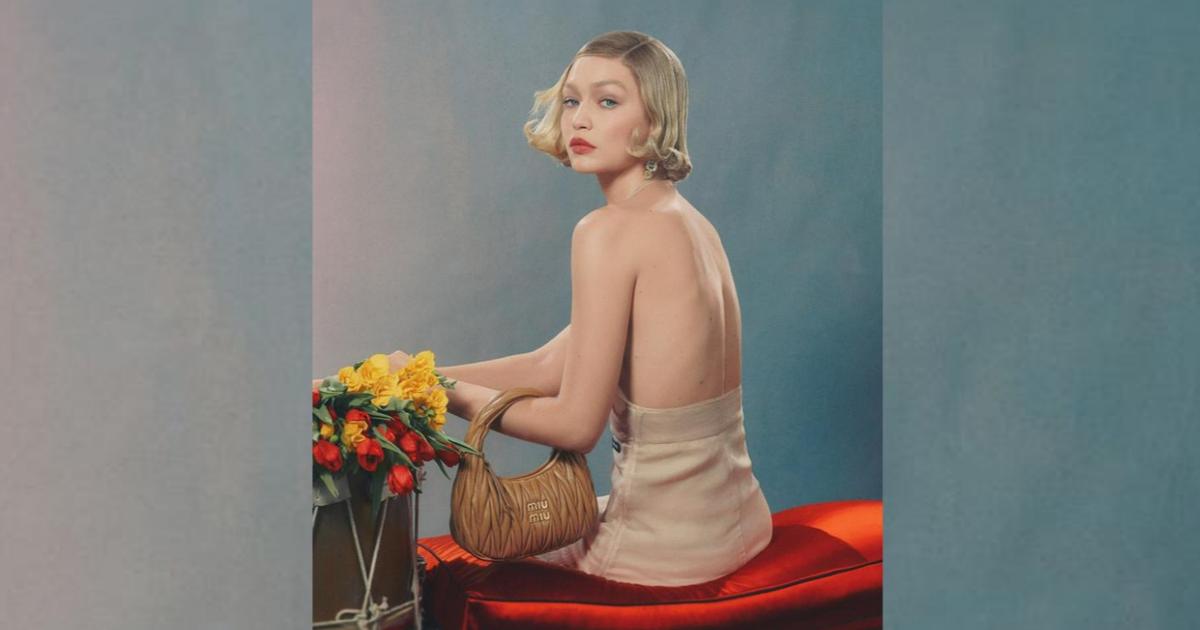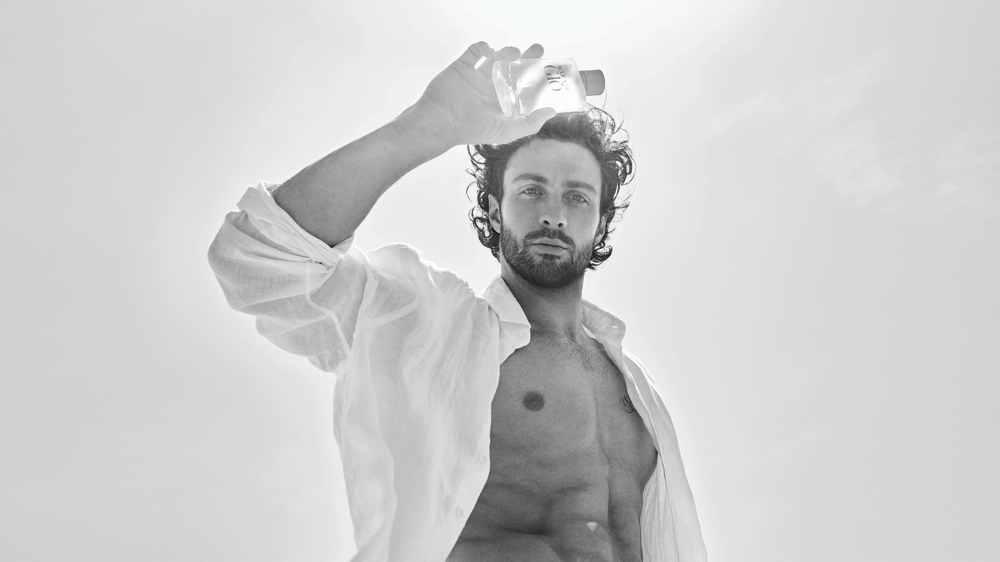The urban legend of clothing tells that in the
starter pack
of those who want to show off properly in artistic-cultural territory, an issey miyake cannot be missing.
A myth of intellectual style/dress that is especially taken for granted in galleries, fairs, biennials, and contemporary art soirees, so much so that it has become a cliché standardizer for that elite that deals in the lofty spheres of creation and ideas.
Why is Issey Miyake the subject of a museum exhibition?
Why was he the first fashion designer to reach the cover of
Artforum
magazine ?
Why are his clothes the favorites of so many prominent figures in the arts? ”, The American critic Herbert Muschamp inquired in 1998 in that review for
The New York Times
about the
Issey Miyake Making Things
exhibition at the Cartier Foundation in Paris.
No, there is no sure answer to the last question, the one of the million in this case, which the person concerned never saw fit to consider either.
"I think his great challenge was to design simply and simply for everyone, clothes that anyone can wear in their day-to-day life, like jeans or a T-shirt," Midori Kitamura, president of the Miyake Design Studio and hand in hand, conceded to this journalist. right wing of the Japanese genius for four long decades, when he opened the exhibition
The Work of Miyake Issey
at the National Art Center in Tokyo, in 2016. And he concluded: “Issey Miyake wants to make good products, not fashion.
And it is the impact of those products on the daily lives of those who wear them that, in the end, will make history”.
That six months after the disappearance of the creator (born in Hiroshima in 1938, died in Tokyo at the beginning of August 2022) his legacy continues to be reviewed in the same terms of fetishism says a lot about the deep scope of the connection between a miyake and those who have vowed to wear it.
Chronicles about it have proliferated since then, repeatedly cheering such faithful devotees.
The architect Zaha Hadid, for example, who began to get involved in her volumes in the early eighties.
The midas of computing Steve Jobs and his sweaters with what we call here the Perkins neck, which he wore as an identity second skin (the founder of Apple asked him for one in a personal capacity and sent him a hundred. When Jobs died in 2011, Miyake withdrew the market model).
singer grace jones
Plastic Body
(autumn-winter 1980) that he treasures.
“I am not a buyer by nature.
I wear clothes until they fall apart, because they're the ones I love.
And I like to think about how I can change what I wear based on how I wear it.
Perhaps that is why I am unconditional of Miyake”, wrote the incorruptible fashion critic Suzy Menkes in 2019. It is normal that the gallery owner Nerea Fernández does not talk about clients, but about believers.
“When you are hanging a piece at a fair stand and after a while you have to go to dinner or catch a plane, functionality is highly valued,” says Nerea Fernández, president of the Arte Madrid association and co-director of the NF/ exhibition space. Nieves Fernandez.Pablo Zamora
The president of the Arte Madrid association and co-director of the NF/Nieves Fernández exhibition space laughs when she admits that she herself meets the stereotype: "I'm quite textbook, especially when it comes to wearing black."
That Japanese label abounds in her closet will not be surprising, of course: “Fashion interests me in a conceptual sense.
My relationship with designers like Rei Kawakubo [Comme des Garçons], Martin Margiela or Issey Miyake is almost like the one you can establish with a visual artist you admire, because they are creators who have raised conceptually very courageous questions.
I don't care about logos, but what moves at the crossroads of disciplines”.
Nor what could be a plausible conclusion regarding the long shadow of Miyake's clothing in the territories of art, which she ventures as follows:
“Part of a fascination for his proposal, aesthetic and intellectual, which is pragmatic.
It is the reality of use: no sizing problem, easy to wash, no need to iron... When you are hanging a piece at a fair stand and after a while you have to go to dinner or catch a plane, functionality is highly valued.
On the other hand, you are more attracted to those who work from ideas.
You feel like buying the clothes of those creators who interest you because of their way of thinking, just as you would with an artist”.
Nerea, like her sisters Idoia and Edurne, soon discovered the work of the Japanese thanks to their mother, the veteran gallery owner and collector Nieves Fernández, and they could no longer take it off her body or head.
“I started very young to go with her to international fairs, where it was common to see many women, and even some men, wearing it.
In addition to art, I was surprised by the elegance of the people”, remembers Edurne.
"Then Issey Miyake was not sold in Spain, so those trips were an opportunity to buy his clothes or, better, pieces, because he was a clothing sculptor."
Consultant and adviser to collectors, Edurne would end up running the store next to the maternal gallery on Calle de Blanca de Navarra in Madrid, a pioneer in dispatching the label for these payments, “a blank canvas for creation,
to go about doing things”, he explains about Making Things, a name borrowed from that show at the Cartier Foundation.
“We always consider it an idealistic project;
as absolute believers, the only leitmotif was that we loved it.
In that sense, the way to sell a Miyake piece is similar to one of art, because you believe it”.
"Sometimes, he still tells me if I'm a Buddhist, or how good it is to be a museum director so I can wear a tracksuit... Not everyone understands Miyake," admits Manuel Segade, director of the Dos de Mayo Art Center in Móstoles, who he is a fan of Homme Plissé, the men's version of Pleats Please.
"For me, the erasure of gender that Miyake causes is fundamental." Pablo Zamora
If NF/Nieves Fernández has been one of the inevitable destinations for contemporary art in Spain for almost half a century, Making Things was for avant-garde clothing for a little over two decades, extending the gallery's reach to fashion from 1996 and 2019. “At first it was difficult, because the brand requires proactivity.
Here it was known for its perfumes, it was not yet seen so much at fairs.
We invented content to spread it, like the
Making News newsletter
, a newsletter in which we reported on the store's activities and Miyake's creative and research work.
We were not fashion entrepreneurs, it was not a commercial adventure, our approach to the firm was that of art”, says Nerea, who aligns the designer's work with the weightless abstraction of Morris Louis, the angular constructions of Robert Morris and the Malevich's idea of art as a motor of social change.
With such a great corpus, the Pleats Please line has long been a favorite among artistic agents.
Miyake himself placed it ahead of his other products: "Of all the numerous garments that I have created in these four decades, the Pleats Please are without a doubt the ones that I consider most mine, my most valuable contribution to design," he said about a technique that he began to develop in 1988, inspired by a silk scarf folded in four and folded on the bias and the belief that “style should not be restricted by profession or age”.
Makiko Minagawa, head of textile research and design at the firm since 1970, came up with the formula when she opted for a type of polyester knit used in lining, light and resistant, with the ideal thermoplasticity to withstand the high temperatures of the pleating process.
The result was perfect, a supple, silky, durable board put to the test by the Frankfurt Ballet during its Japanese tour in 1991. “The dancers came to my studio and, for fun, the boys put on the costumes of the girls.
They ignored my instructions and began to dance with whatever they wanted.
They moved with such joyful abandon that I let them do it”, recalled the designer in the monograph
Pleats Please
(Taschen, 2012).
The gallery owner and collector Nieves Fernández was one of the first to wear Miyake garments in Spain.
She and her daughters were the creators of Making Things, a store that for more than two decades offered the designs of the Japanese creator in Madrid.
In this photograph she is wearing one of the numerous Pleats Please looks that she treasures in her closet. Pablo Zamora
“For me, the erasure of gender that Miyake provokes, with that kind of djellabas that hang from the shoulders allowing the body to breathe, is essential.
In men, the silhouette has an elegance that, even masculine, is very soft”, concedes Manuel Segade.
The director of the Centro de Arte Dos de Mayo de Móstoles (CA2M, Madrid) is another
miyaker
de pro: “I use it a lot, both for work and on special occasions.
Sometimes, they still tell me that if I am a Buddhist, or how good it is to be a museum director so that I can wear a tracksuit… Not everyone understands it”.
It was clear to him as soon as he discovered Homme Plissé, the men's version of Pleats Please launched in 2013 (the original women's version has been on the market since 1993).
“The art world has this ability to break with the canon, we are expected not to dress conventionally.
On the other hand, I already had my doubts about wearing a suit.
As a homosexual, the suit is what has always left me out of the frame, because of what it has of heteropatriarchal symbolism, but in Miyake I found the solution, a vein that allowed me to break with the traditional dynamics of the charcoal gray suit for a gentleman”.
The Pleats Please line is a long-time favorite among artistic agents.
Miyake himself placed it ahead of his other products.
On this page, Idoia and Edurne Fernández, who soon discovered the work of the Japanese artist Issey Miyake thanks to his mother, the veteran gallery owner and collector Nieves Fernández.Pablo Zamora
Before Miyake, Segade used the Comme des Garçons maxiskirts as a resource, “an image that generated a quorum and didn't leave me out”.
Until he won the architecture of the Japanese designer as a conceptual choice.
“It's not just comfort, his clothes also generate open compositions, which sometimes defy logic.
Art is very receptive to those kinds of silhouettes,” he says.
Miyake always repeated it: "I try to offer answers to those who have questions about his time and how to live in it."
In the end, the solution to the critic's question was that simple.
Subscribe to continue reading
Read without limits
Keep reading
I'm already a subscriber














